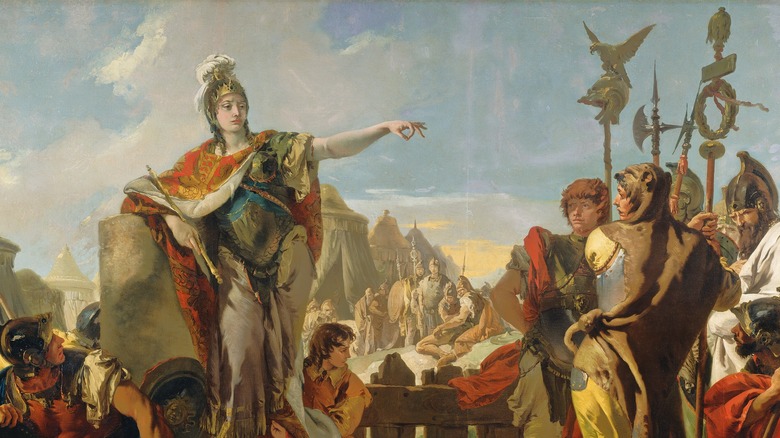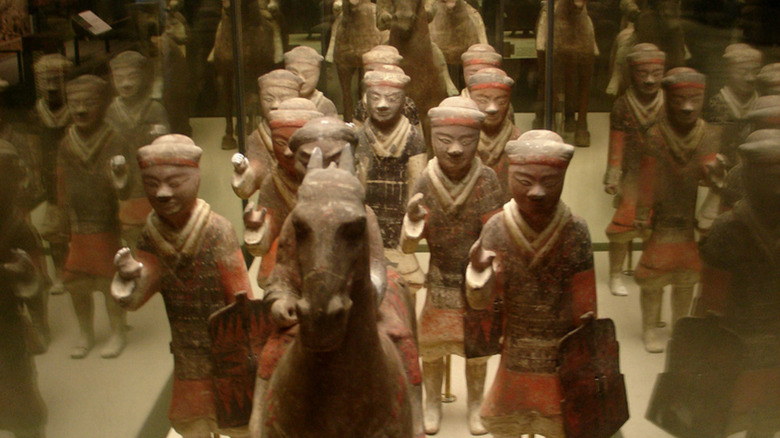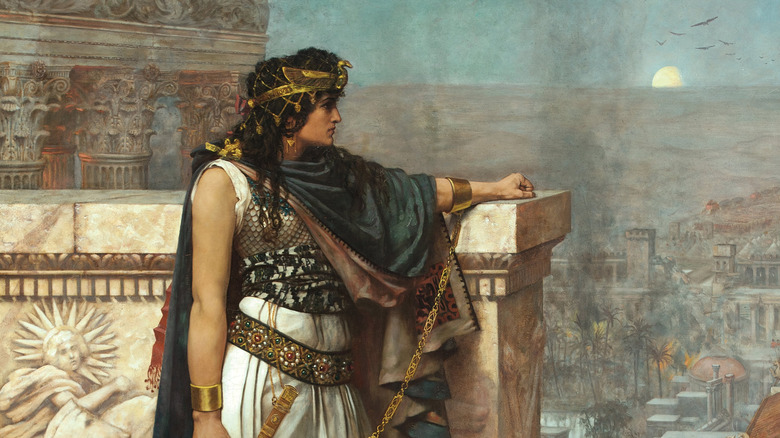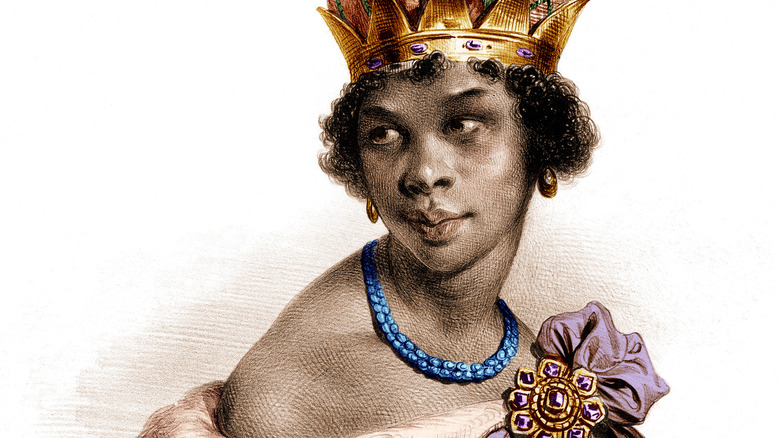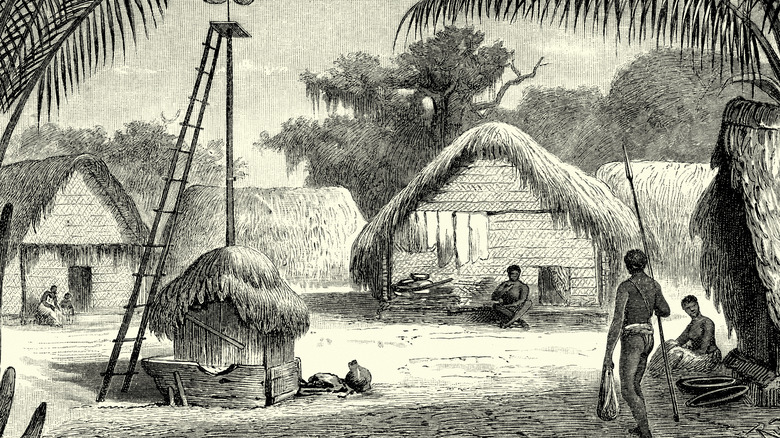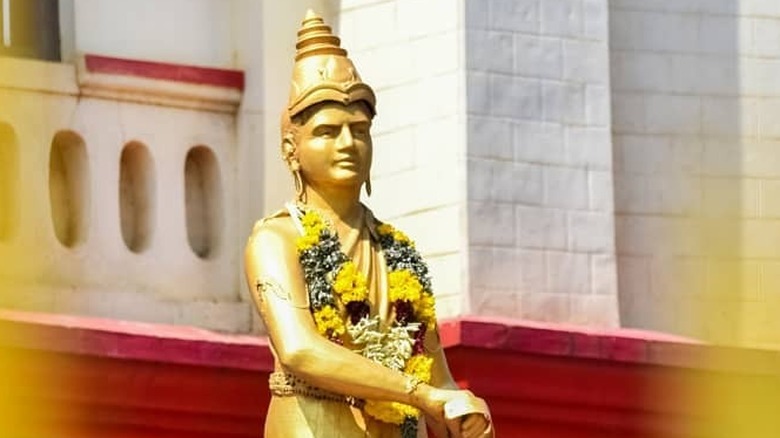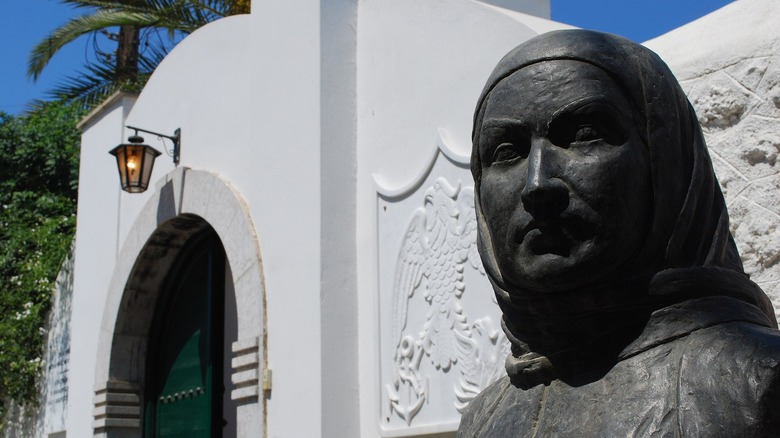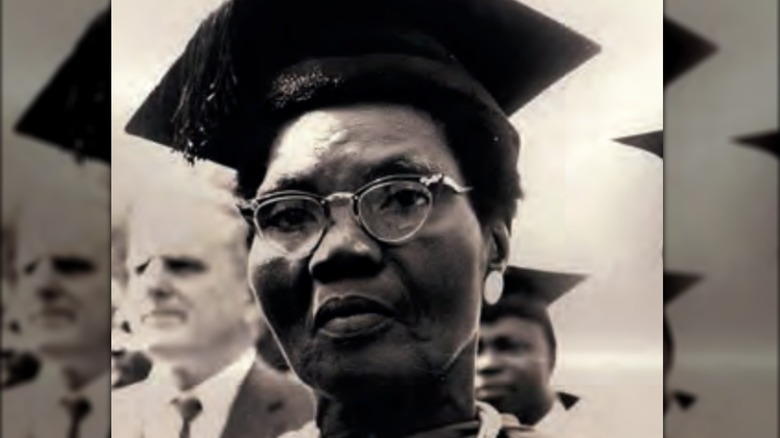Women Who Led Successful Rebellions
Throughout history, women have been at the forefront of rebellions. From semi-legendary figures in the first to fifth centuries whose stories blend the line between history and myth to modern revolutionary leaders, women have always played vital roles in uprisings against the powers that be.
Some of the most famous women-led revolutions ended in tragedy and death, making their leaders into martyrs. The most famous of these is likely the Celtic warrior queen Boudica, who refused to submit to the advancing Roman Empire and whose followers killed more than 70,000 Romans and Roman-allied Britons before being defeated. However, there have been many women who led successful rebellions, whether that meant sparking lasting reform in their nations or conquering a kingdom and sitting on the throne themselves.
Some women used their existing power and wealth to build powerful armies, or their political savvy to negotiate for their cause, while others utilized guerilla warfare to topple empires or escaped from enslavement to build their revolutions up from nothing. These revolts were as different as the women who led them – some were bloodless, others resulted in burned cities and hundreds of casualties.
Mother Lü
In A.D. 11, the Huang He River caused horrendous damage to crops and homes, making many people refugees in their own country. This, combined with extremely unpopular tax reforms implemented by Xin Emperor Wang Mang, created a tense atmosphere of political unrest among the people of China. Around A.D. 22, a man was executed on the orders of a local government official, leaving behind his grieving mother. Her quest for vengeance led to the death of an emperor.
As described in Bret Hinsch's "Women in Early Imperial China," the woman was known as Mother Lü. After her son was killed she gathered thousands of followers who were moved by her story and personally led them in an uprising. Mother Lü and her followers took control of the city and killed the official who had ordered her son's execution.
Although Mother Lü herself did not live much longer, her followers became an important force called the Red Eyebrows, so called because of their tendency to paint their faces like demons. The Red Eyebrows ultimately grew strong enough to overwhelm Wang Mang's army and joined with other uprisings all over China. Eventually, Wang Mang himself was killed, restoring the Han dynasty to power. What had begun as one woman's need for revenge changed the history of China.
[Featured image by drs2biz via Wikimedia Commons | Cropped and scaled | CC BY-SA 2.0]
Trung Trac
China had control of northern Vietnam for around 1000 years – but for three years it was ruled by a Vietnamese queen named Trung Trac. Although her rule was ultimately crushed by the Chinese, the uprising that she and her sister Nhị led made them national heroes.
As described in "The Complete Book of the Historical Records of Đại Việt," as translated by historian Liam Kelley, the Chinese official put in charge of the region where the Trung family lived was notoriously violent. Around A.D. 40, one of the sisters' husbands was arrested and executed. In retaliation, Trung Trac and her sister Nhị led a revolt of the local people against their Chinese governor, forcing him to flee. Trung Trac and her followers took control of northern Vietnam. Tran dynasty historian Lê Văn Hưu wrote: "She established a kingdom and declared herself monarch as easily as turning over her hand."
Exactly what happened to the Trung sisters when China recaptured northern Vietnam in A.D. 43 is unknown, but according to legends in Vietnam, they both drowned themselves rather than be captured by enemy forces.
Zenobia
Rebelling against the Roman Empire, even when it was vulnerable and fracturing, was a dangerous proposition. Between A.D. 260 and 270, several powerful leaders were able to break away from Rome, taking pieces of the empire with them. For one such leader, Zenobia of Palmyra, the trick was to pretend her revolt was nothing of the kind.
When she rebelled against Rome, Empress Zenobia captured everything from Syria to Egypt. Her territory was known as the Palmyrene Empire, but Zenobia always pretended that her territory was still a part of Rome – just a part that she was controlling for the good of the Empire. In fact, she even went as far as to have the money in the Palmyrene empire have the image of the Roman Emperor on it. On the other side, however, she printed her son's face. It is believed that it was Zenobia's real ambition to have her son named Emperor of Rome in order to bring her territory back to heel.
The Roman emperor was not swayed by this, however, and in A.D. 272, the Roman Emperor went to war against Zenobia. After a bloody campaign, Rome was able to retake the territory that had been ruled by Zenobia. One famous story claims that Zenobia was paraded through Rome in golden chains – but in reality, the fact that a woman had been able to take so much territory from Rome and rule for so long was likely covered up as much as possible.
Mavia
Mavia is remembered as a semi-legendary figure who conquered vast swaths of the Middle East, successfully rebelled against the unstable Eastern Roman Empire and ruled as a decadent queen of Arabia for decades. While the details of her story are debated, what is known is that she managed to make Constantinople negotiate for peace.
It's believed that Mavia was a member of the nobility from the Kalb tribe, a partially nomadic group in modern-day Saudi Arabia. She married the leader of a community of tribes called Tanukhids, and when he died in A.D 375, she became a ruling queen. She quickly began an aggressive military campaign against neighboring territories, conquering large amounts of territory in the Middle East. She challenged the Roman Empire itself. It's believed that although she waged war on the Empire, her actual goal was an alliance. She just didn't want her people to have to live under Roman rule.
Eventually, Mavia's campaign was so successful that the Romans were forced to send an envoy to negotiate, securing their independence from the empire. Later in her rule, she even sent her armies to assist Constantinople in fighting off the invading Goths, at least for a little while.
Gudit
Sifting the true history from legend in 10th century Ethiopia is a difficult task, but in multiple traditions there are mentions of a powerful rebel queen: Gudit. One story, recounted by Sergew Hable Selassie in the "Journal of Ethiopian Studies" describes how Gudit had so many followers that when she ordered each of her soldiers to throw a rock onto a pile, they created a mountain. She is believed to have raised her vast army in order to rebel against Aksum, rule in her own right for four decades, and found a new dynasty.
In some accounts, Gudit was once a vassal of the king of Aksum who rose up against him and took the throne for herself. In one famous account, Gudit began life as a princess, only to be cast out of the royal court and forced into sex work to survive. When she was paid for her services by a church official, the community blamed Gudit for seducing a holy man, and mutilated her by cutting off one of her breasts. She fled, married a Syrian Jew, raised her army, and led an uprising against Aksum and burned their churches to the ground.
[Featured image by Bernard Gagnon via Wikimedia Commons | Cropped and scaled | GNU Free Documentation License]
Gwendolen
The "Historia Regum Britanniae," written in A.D. 1136 by Geoffrey of Monmouth, famously blended history and legend but remains one of the most important medieval texts. Along with the stories of King Lear and King Arthur, Monmouth tells the story of Gwendolen, an abandoned 11th-century queen who led a rebellion against her former lover.
King Locrinus ruled one of the kingdoms of Britain known as Loegria. According to legend he was in love with a German princess named Estrilis but was unable to marry her because he had already promised to marry the famous warrior Corineus' daughter, Gwendolen. Although he married Gwendolen and had a child with her, he continued seeing Estrilis in secret for years until the formidable Corineus died. Without her father's protection, Locrinus felt safe leaving Gwendolen and making Estrildis queen. What he didn't know was that Gwendolen was just as fierce as her father had been.
Gwendolen first fled Loegria, but soon was back with an army of her own. Her forces met Locrinus' and King Locrinus was killed. After the revolt, Gwendolen took control of Loegria and, after killing her rival Estrildis, ruled as queen on her own for 15 years before giving the kingdom to the son she'd had with Locrinus.
Njinga
In 1624, Nzinga (also spelled Njinga) became queen of Ndongo, a West Central African kingdom. She ruled alongside her sisters Kambu and Funji, but for Nzinga's entire lifetime, the people in control of their land were Portuguese colonizers. In order to take back her kingdom from Portugal, which had controlled it for more than 70 years, Nzinga had to encourage her people to rise up.
Nzinga sent word all across Ndongo that it was time to rebel, and people who had been enslaved by the Portuguese broke free and fought back against their oppressors. This, coupled with her strategic blocking of roads, cost the Portuguese dearly. The rebellion was a success. Portugal attempted to negotiate with Nzinga, but although the kingdom of Ndongo did take slaves from neighboring kingdoms in battle, she refused to allow her people to be subjugated by the Portuguese. To lend herself legitimacy in the eyes of Europeans, Nzinga had herself baptized. After years of conflict with Portugal, Nzinga was able to drive them out of her kingdom by joining forces with another colonial power: the Netherlands. By the end of her life, Nzinga had built Ndongo into a powerful kingdom which even Portugal had to trade with.
Nanny
Spain controlled Jamaica for around 200 years. After most of the indigenous people had been killed, the colonial power forced African people into slavery to work on the island instead. In the early 1500s, many escaped or led revolts against their oppressors before fleeing into the Jamaican mountains. There, they formed communities of their own, which were eventually able to form an alliance with the British, who took control of most of Jamaica in 1655. According to legend, the first of these communities was led by a woman called Nanny.
As described by a 2016 article in "The Dictionary of Caribbean and Afro-Latin American Biography" it is believed that Nanny and at least one of her siblings had been kidnapped from her home in modern-day Ghana and trafficked to Jamaica. Nanny escaped and fled, but she wasn't on the run for long. Soon she had formed her own community of others who had freed themselves from slavery. Nanny's followers believed that she had the ability to summon her ancestors to help her, both to heal the sick and in battle.
Rather than lying low, Nanny and her followers targeted British plantations, likely using a kind of guerilla warfare in which camouflaged fighters ambushed their enemies, did damage, and then vanished back into the Jamaican mountains. Eventually, the British were forced to negotiate with them on equal footing, until in 1738, the first of three treaties were established, followed by a land grant of 500 acres of land for Nanny and her followers.
Velu Nachiyar
The British East India Company arrived in India in 1608, and over the course of the next 150 years insidiously took control of the region. Some Indian rulers cooperated, some fled, and some resisted. One leader, Velu Nachiyar, not only encouraged her people to rise up against British control, she took up arms against them herself.
As described in a 2021 article in the "Turkish Online Journal of Qualitative Inquiry," after her husband was killed by the British in 1772, Nachiyar fled – but she returned with an army. She put together a fighting force without regard for the caste system or gender. Having women soldiers was unusual, but it would prove vital to the success of her rebellion. In 1780, Nachiyar planned a deadly ambush. Her female soldiers got into the British fort by posing as local women who wanted to pray at the temple. Once inside, one woman, who is believed to have been Nachiyar's adopted daughter, set herself on fire and leaped into the British ammunition stores, killing herself and doing incredible damage. In the chaos, the rest of Nachiyar's forces struck, allowing Nachiyar herself to enter the battle herself, taking the fort by force.
Not only did Nachiyar recapture her kingdom, she was able to hold it. She ruled for a full decade and was able to leave her kingdom to her daughter, making her one of the few Indian rulers to reclaim their kingdoms from the British, and the first Indian woman to rebel against the East India Company.
[Featured image by N.K.BALA via Wikimedia Commons | Cropped and scaled | CC BY-SA 4.0]
Laskarina Bouboulina
In 1771, an infant named Laskarina was born in prison while her mother was visiting her father, who had been jailed for his role in a failed revolution. He would die in prison, but his daughter would become a rebel leader and a national hero of Greece.
By the time she was 40, Laskarina Bouboulina had been married twice and raised ten children, but her most famous achievements were still to come. As described in a presentation by Pavlos Demertzis-Bouboulis, director of The Bouboulina Museum, her late husbands left her a fortune, including ships and land. She used her wealth and her ships to further the revolutionary cause and promote a free Greece, recruiting her own soldiers and purchasing and smuggling weapons. In 1821, she raised her own flag of revolution. The revolt against the Ottoman Empire began, with Bouboulina leading the charge on her fleet of warships.
She personally participated in battles and led her own forces, even after her oldest son died fighting beside her. Although she was a fierce warrior, it is believed that after her men took Tripoli and pillaged the fallen city, she put her own safety on the line to protect the women in the harem of the city's defeated Ottoman ruler.
[Featured image by Jeanhousen via Wikimedia Commons | Cropped and scaled | CC BY 3.0 DEED]
Funmilayo Ransome-Kuti
The rallying cry "No taxation without representation" first became prominent during the American Revolution, but another British colony also used it for a revolution of their own: Nigeria. As described by historian Judith Byfield (via Cornell University) Funmilayo Ransome-Kuti's nonviolent revolt not only ended the reign of a king and challenged the authority of a colonial power, it changed the future of Nigeria.
Ransome-Kuti was the leader of the Abeokuta Women's Union and she campaigned against taxes that women and girls were required to pay as soon as they turned 15 – several years younger than boys and men – regardless of income. As described in a report by Al Jazeera, some corrupt government officials actually strip-searched young girls to decide if they were old enough to pay taxes or not.
In 1947, Ransome-Kuti organized her fellow women in an event that would soon be known as the Women's Revolt. The group put the palace of Oba Ademola II under siege, surrounding it and chanting war songs. Not only was the tax suspended, but King Oba Ademola was forced into exile.
[Featured image by UNESCO via Wikimedia Commons | Cropped and scaled | CC BY-SA 3.0]
Comandanta Ramona
In 1994, a group known as Zapatista National Liberation Army that pushed for autonomy for the indigenous people of Mexico and land reform started a rebellion using guerrilla warfare tactics. The best known of the Zapatista rebels was a man called Subcomandante Marcos, but it was a woman known only as Comandanta Ramona, and sometimes "The Petite Warrior," who often led the rebels on the frontlines. She was known for concealing her identity with a balaclava that covered her face and carrying an enormous rifle.
The real fighting lasted 12 days, during which the Zapatistas captured four towns. Approximately 150 people were killed. After the fighting ended, Comandanta Ramona participated in peace talks with the Mexican government. After the uprising, she remained a powerful advocate for women's rights and has become an almost mystical figure. Even after her death in 2006, her real identity and life before the revolution have remained secret.
[Featured image by bastian (Heriberto Rodriguez) Wikimedia Commons | Cropped and scaled | CC BY-SA 2.0]
